All about planting cabbage
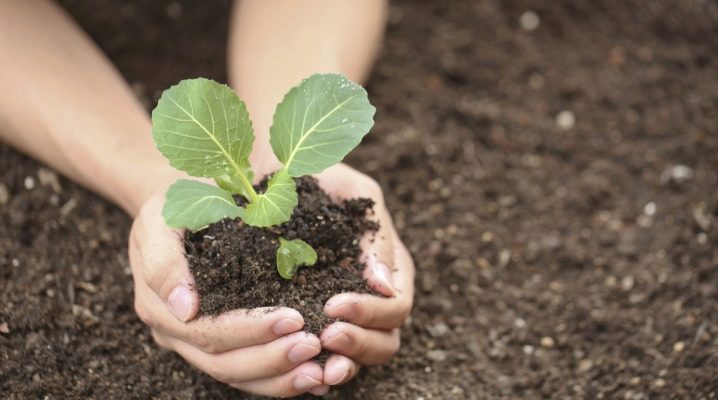
Cabbage is a genus of plants from the cruciferous family. The culture is common in most regions of Europe and Asia. It is eaten fresh, boiled, fermented. Cabbage is a versatile and affordable source of vitamins. But it becomes even more accessible if you grow it yourself. Here's how and when to plant your cabbage correctly to get an excellent healthy harvest. After all, no matter how popular the plant is, in the process of its cultivation there are enough tricks and "pitfalls".
Landing dates
The timing of planting cabbage can vary significantly depending on the region and weather conditions in a particular year. It is quite understandable that it is impossible to name the dates that are equally suitable for planting cabbage in the Urals, in the Moscow region and Siberia, but there are recommended dates from which you can build on.
They also depend on the variety of cabbage.
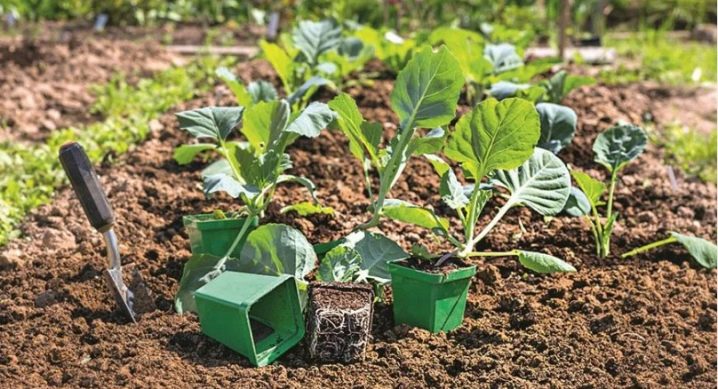
Early maturing varieties
They are planted on seedlings in the period from 15 to 25 March, in the ground - at the end of May. The crop is harvested starting in July. By the time of planting, seedlings should have at least 5-7 leaves. Their height should be about 15 cm. The growing period is about 1.5-2 months, 45-60 days, and the growing season is up to 120 days.
Early ripening varieties of white cabbage are recognizable by medium-sized loose cocks. Such cabbage is suitable for soups, salads, but not suitable for preservation.
The early type includes:
- June;
- "Kazachok";
- "Point";
- "Malachite";
- "Aurora".
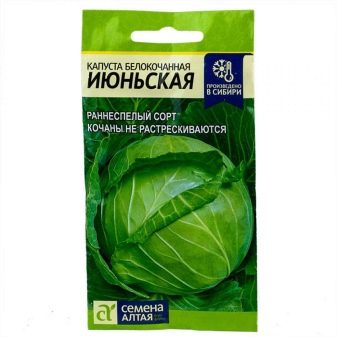
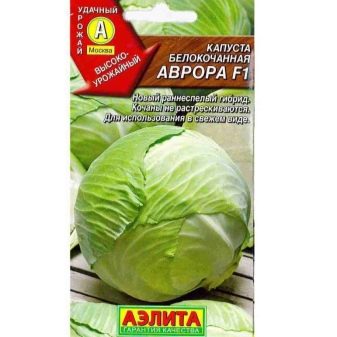
Mid-season
Favorable dates for planting seeds of such varieties are late March or early April. The time for planting seedlings in open land is late spring (May 20-30) or the very beginning of June.
For mid-season seedlings, it is enough to have at least 4 leaves and 20 cm in height for planting. Seedlings are grown for one and a half months, the growing season is up to 170 days. These are the most versatile, productive varieties.
These include:
- "Glory";
- "Belorusskaya";
- "Siberian";
- "Golden Hectare".

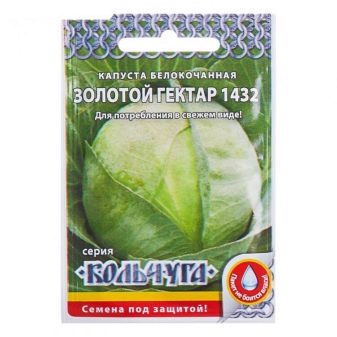
Late ripening
Late ripening varieties are planted in April. A month later, they are planted in open ground. Such cabbage reaches maturity after 170-200 days. The head of this cabbage is dense, it can be stored for a long time, it is quite versatile.
Varieties:
- "Kharkovskaya winter";
- "Amager";
- "Creumont";
- "Extra";
- "Kolobok".
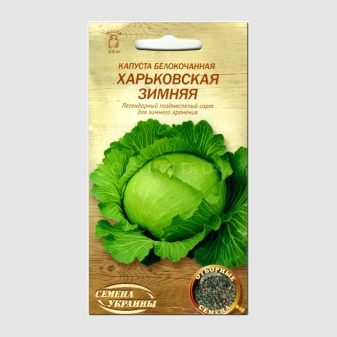

More specific dates for planting cabbage by region are as follows.
- Siberia. The middle of April is suitable for planting early varieties of white cabbage, the first half of May is suitable for medium and late varieties.
- Ural. Early ripe plants are planted in early April. Mid-season and late - late April or early May.
- Central areas. Mid-March is the term for early-maturing, mid-ripening cabbage, early April is for late cabbage.
- Southern regions. The beginning of March is the best option for most varieties.
- Moscow region.
Late varieties are planted in mid-April, early and mid-ripening in late May.
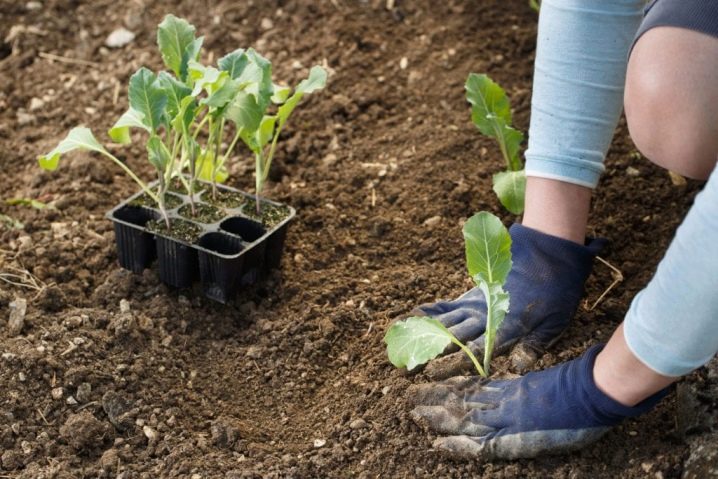
Best predecessors
When the variety has already been selected and the planting time is known, you need to decide on the place reserved for cabbage on the site. It will be correct to plant cabbage in a well-lit place with loamy or sandy soil or clay soil when it comes to mid- and late-ripening varieties. Do not try to grow cabbage in acidic soil. Such a soil requires preliminary liming. You need to use dolomite flour or fluff lime. The first is brought in in the spring, the second - in the fall.
The soil must be plowed beforehand: the presence of large and dense clods of soil will negatively affect the development of the plant. Heavy soil requires special preparation. In the spring, it must be thoroughly plowed, harrowed and loosened. If there was a bacteriosis infection on the site, then cabbage can be grown on it only after 8 years.
Cabbage should not be planted where it used to grow:
- radish;
- swede;
- turnip;
- turnip;
- mustard;
- radish.
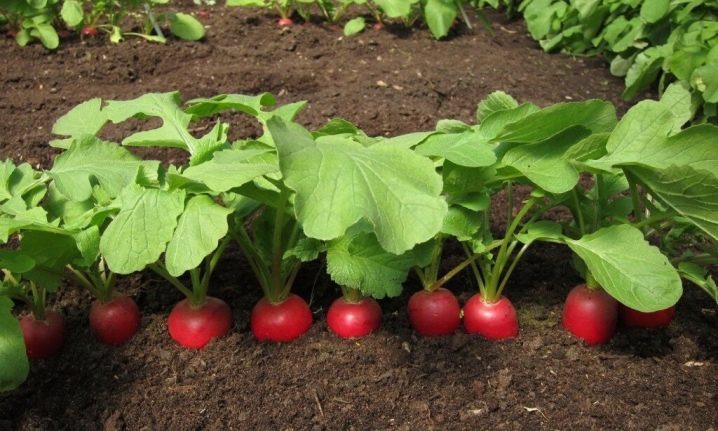
Cabbage itself will not be the best predecessor. After these crops, you need to wait about 3 years.
You can plant cabbage after:
- potatoes;
- garlic;
- carrots;
- Luke;
- tomatoes;
- cucumbers;
- Jerusalem artichoke;
- peas;
- beans;
- beans.

You should also be careful about the neighbors of the cabbage. It is good if they are potatoes, cucumbers and dill. But planting white cabbage next to tomatoes or grapes is not the best idea.
Whatever previously grew on the site, the planting zone must first be prepared:
- dig up the soil in early autumn without leveling the surface;
- level the ground after the snow has melted;
- wait for the appearance of weeds and remove them.
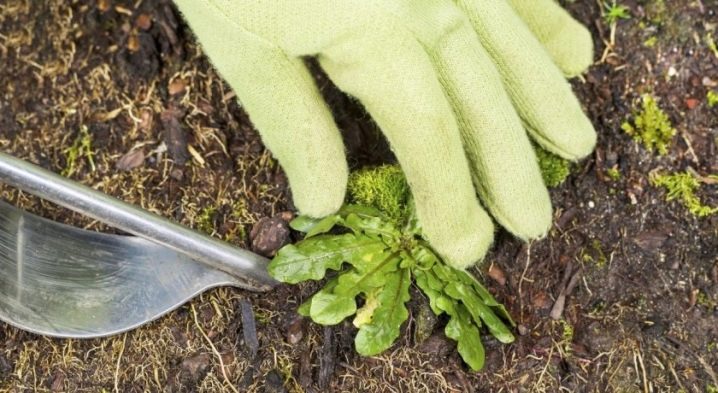
How to plant seedlings?
Cabbage can be grown using seeds or seedlings. Let's start with the second option.
Sowing
Having decided on the variety and purchasing the necessary seeds, you need to tackle the soil. The mixture is best prepared in the fall. The most popular composition is as follows (per 1 kg of soil):
- 1 tbsp. a spoonful of ash, which acts as an antiseptic;
- one part of humus;
- one piece of turf.
It is also permissible to use peat-based formulations. The key condition is that the mixture must "breathe" and be fertile.

The following operations need to be done with seeds and soil.
- Warm up the shift in warm water for 20 minutes.
- Place in cold water for 5 minutes.
- Soak them in a growth stimulant (the required time will be indicated on its packaging, since it can differ significantly for different stimulants). Important: it is forbidden to wet the seeds of some varieties. This should be indicated on their package.
- Moisten the soil.
- Submerge the seeds to a centimeter depth.
Cover the seedling pots with foil.
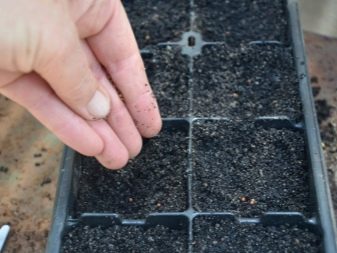

The recommended temperature for keeping seedlings is 20 degrees.
After the first shoots appear, it is required to remove the film, reduce the temperature to 10 degrees. After a week, pour with a solution of potassium permanganate (3 g / 10 l). When the first leaf appears, the following temperature regime will be required for seedlings:
- 14-18 degrees in the daytime;
- up to 10 degrees at night.
Seedlings need fresh air, lighting, protection from drafts. In the light, seedlings need to spend about 15 hours a day. Watering should be uniform, without drying out the soil or overflowing. It is carried out in the evening.
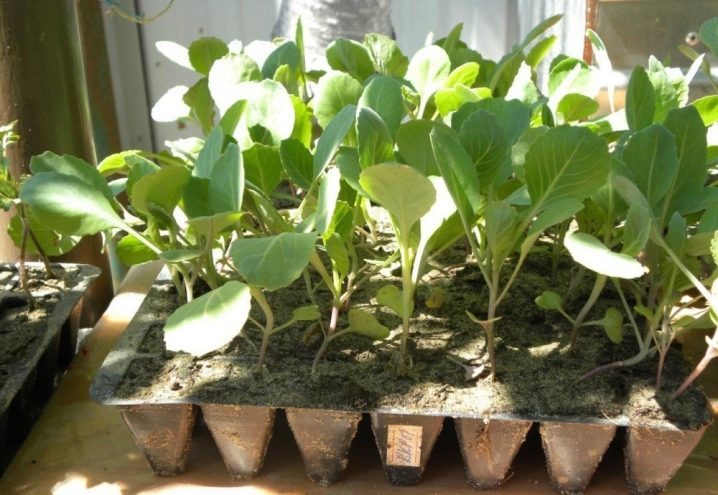
Picking
After 1.5-2 weeks have passed from the appearance of the leaf, the cabbage will need a pick. This will allow the seedlings to receive more nutrition. The only case when you can refuse picking is growing seedlings in individual pots, especially in peat cups. This method reduces the risk of injury to plants during transplanting and gives them more room to grow.
The process of picking cabbage seedlings is as follows:
- water abundantly 1 hour before the procedure;
- remove the plants from the pot along with earthy clods;
- shorten the root system by 1/3;
- transplant the cabbage into an individual container.


Landing in open ground
When the plants reach the size required for their variety, the time of transplantation comes. First, the beds are prepared. The seedling holes should be slightly larger than the roots and peat pot. The distance between the holes should be such that the plants, having reached their final size, do not press on each other, do not block the access of light to neighbors. In the holes you need to fill in a mixture of peat, sand, humus, ash and nitrophoska (1 tbsp. Spoon). After mixing the top dressing, you need to water the beds. After that, you can carefully place the seedlings into the recesses, sprinkling the holes with dry soil.
An approximate scheme for planting cabbage is as follows:
- 30-40 cm in a row for early maturing cabbage varieties;
- 50-70 cm for mid-season, late varieties of white cabbage.
A distance of 60 cm must be maintained between the beds.
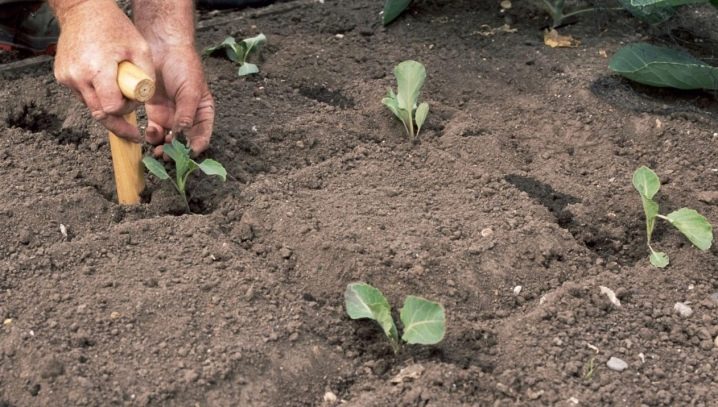
Cabbage is susceptible to attacks by insect pests; for a young plant, they can become fatal. Therefore, it is necessary to engage in prevention and control of them from early spring.
- The first is the treatment for cabbage flies and midges. It is done in 2 stages: immediately after disembarkation and a week later.
- When the cabbage grows up, once every 2 weeks, spraying is carried out against aphids, flea beetles.
As for diseases, some of them are particularly susceptible to cabbage. And in this list there are quite dangerous diseases: bacteriosis, phomosis, gray rot, black leg. They are one of the reasons why you should not grow cabbage for a long time in one place.
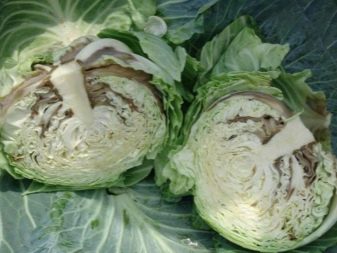
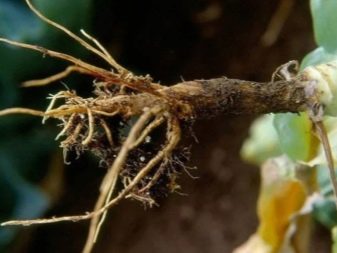
For seedlings and young plants, the following preventive measures are important.
- Before planting seedlings in the ground, the soil must be treated with "Fundazol" (10 g per 10 l of water) in order to protect the plants from the keel.
- If cabbage is grown from seeds or for seeds, then special attention should be paid to the prevention of downy mildew. If there is a risk of its appearance, it is necessary to process the seedlings with Bordeaux liquid.
- To prevent fusarium, the roots of the seedlings are placed in Fitosporin solution for a couple of hours before transplanting.
- A mixture of "Trichodermin" and "Phytocide P" can reduce the risk of phomosis if you treat seedlings with it immediately after transplanting into open ground. The procedure is repeated every 3 weeks.
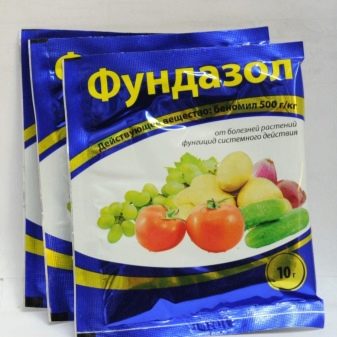
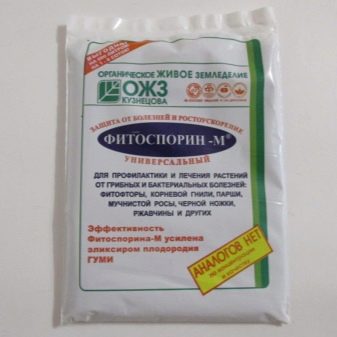
But the main enemy of cabbage remains different types of bacteriosis: it is not for nothing that after they hit the garden bed, it is impossible to grow cabbage on it for almost 10 years. The key method of dealing with them is the control of insect vectors (bedbugs, cabbage fly) and the prompt start of treatment.
If you plan to use purchased seedlings, but you need to be very careful about its choice so that it survives and turns into a strong, healthy plant. By the way, by the seedlings, you can quite clearly understand what kind of plant you will get. In late-ripening cabbage, the leg is noticeably longer than in early-maturing cabbage.
From seedlings with elongated leaves, one should expect oval, slightly elongated heads of cabbage, and if the foliage is round, then the harvest can be expected of a similar shape.

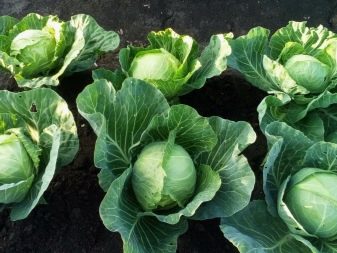
Seedless way
If there is no time and opportunity to work with seedlings, you can try growing cabbage from seeds. It is important to remember that this method is poorly suited for regions with short summers and particularly cold climates. The preparation of the material will be similar to that performed when growing seeds for seedlings. They must be disinfected in advance in a solution of potassium permanganate.
The maximum depth of the holes is 5 cm. Up to 4 seeds are placed in each. To protect the wells, cover with foil or glass jars. Banks are removed when the sprouts are a little stronger. At the same stage, planting is carefully thinned out, leaving only the healthiest plants. Then the remaining cabbage is covered again, every day the protection is removed for a short time. You can finally get rid of cans or films when the weather is stable.

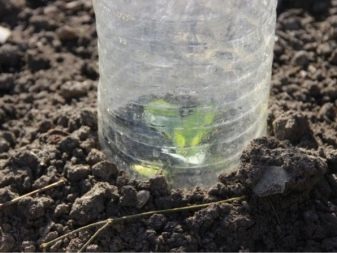
In the initial phase of growth, you need to be very careful about watering cabbage, carrying it out with warm water every 2-3 days. The frequency of watering is reduced after the heads of cabbage are tied. Mid-ripening, late-ripening varieties stop watering a month before picking cabbage. Every 2 weeks, you need to huddle the beds, and loosen the soil after each watering.
As for feeding, the first is carried out with a mullein 15 days after moving into open ground. After 14 days, it is repeated. Potash mixes are applied when the head is formed.
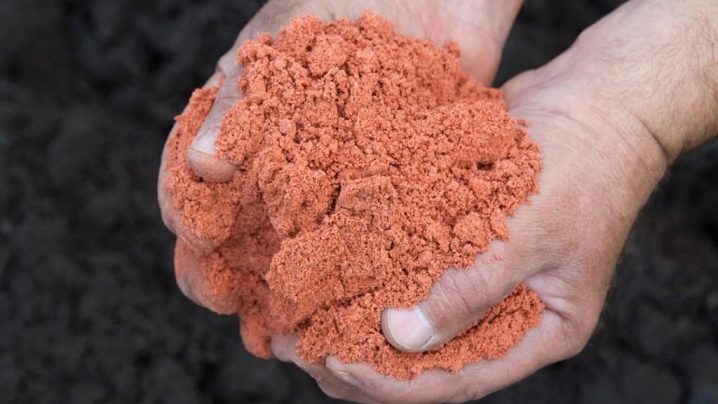










The comment was sent successfully.